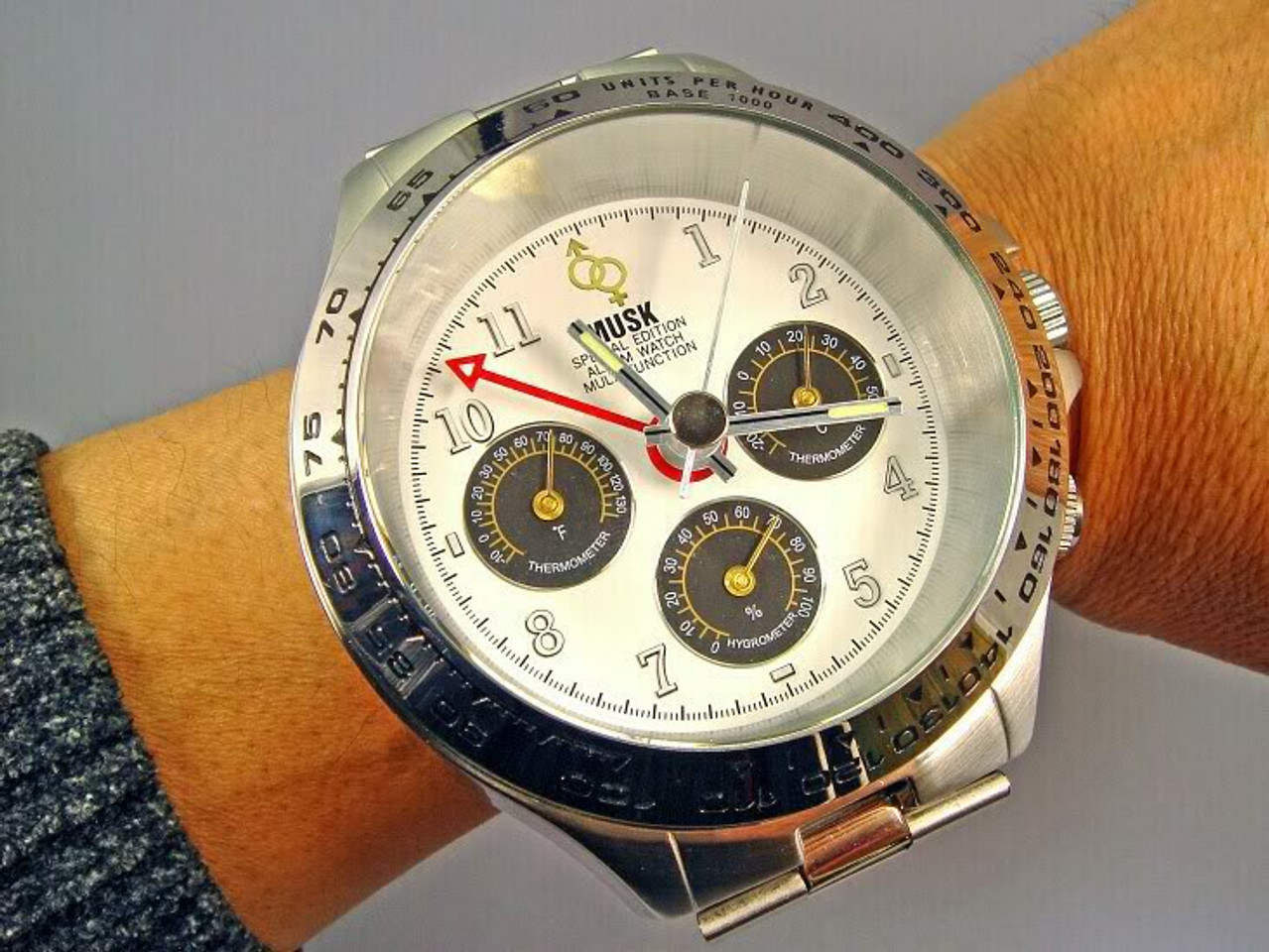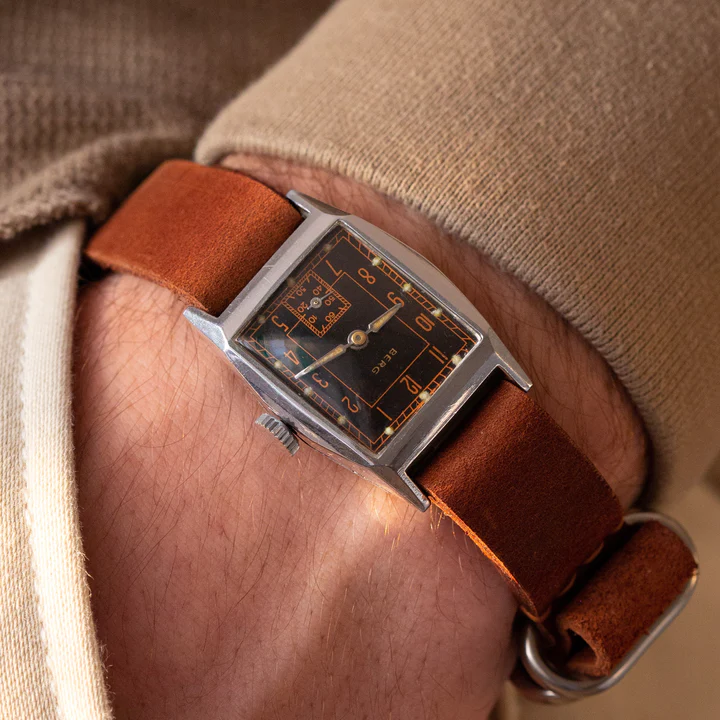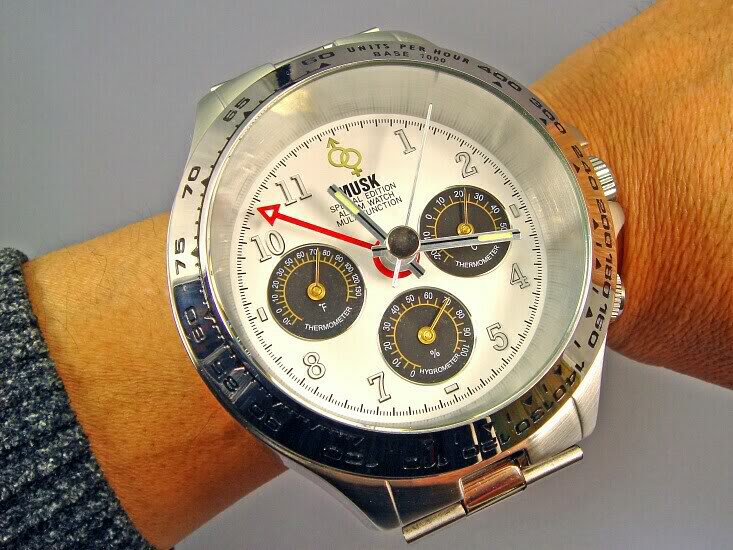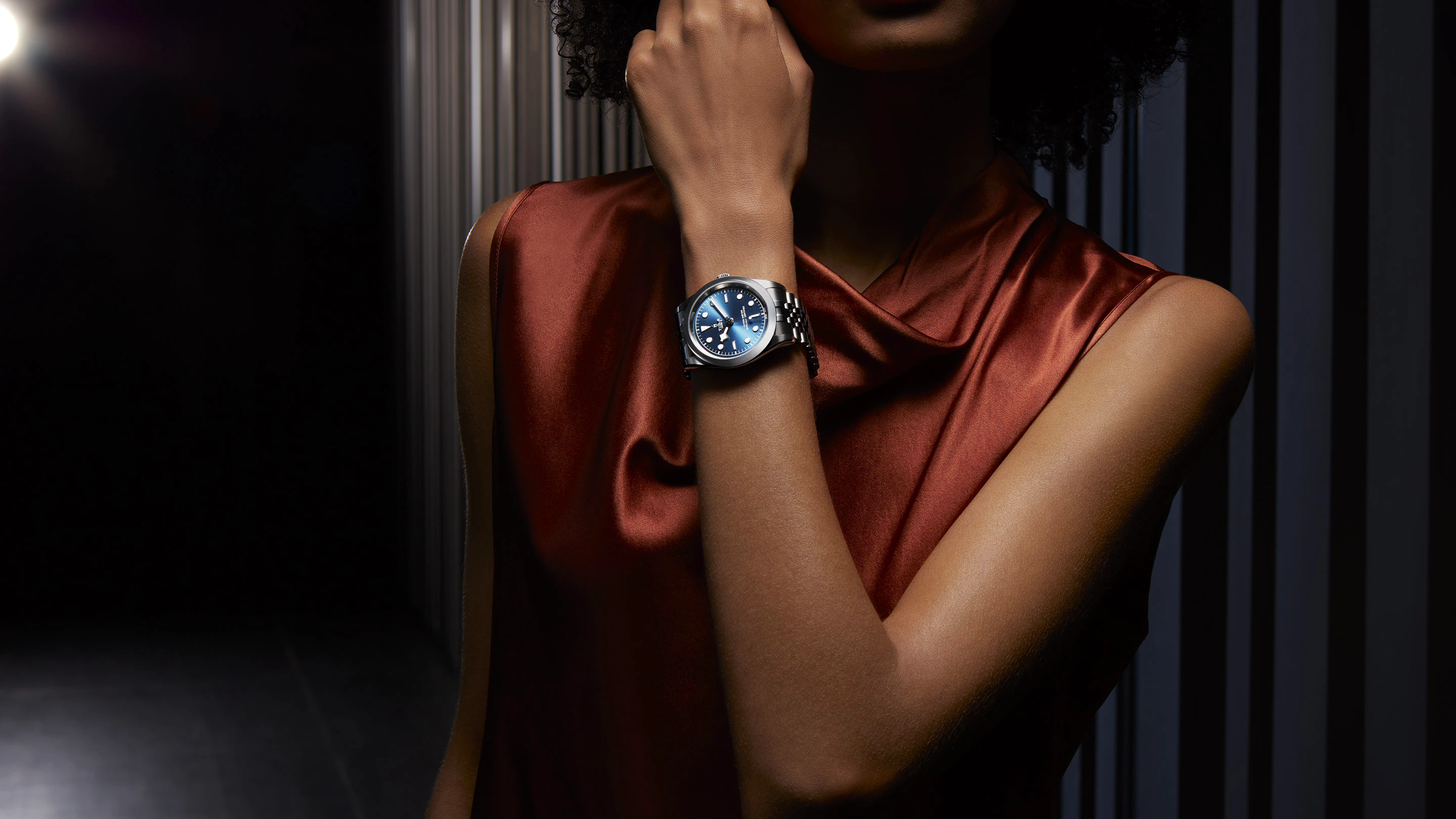Does size really matter?
Human wrists haven't changed much in the last thousands of years. Neither have our eyes. So why have wrist watch sizes changed so markedly over the last 50 years?
The first wrist watch is said to have been made by Patek Philippe in 1868 for a Hungarian noble lady, and until the 1900's they were exclusively seen as suited for women. Men still used pocket watches for many decades after that, until military officers started strapping their pocket watches around their wrists. Napoleon himself is said to have been annoyed with having to fish out his pocket watch all the time during battle, but it was really the first world war that made it common to strap watches to the wrist. After the war was over, wristwatches were the new norm also for men, and the sizes were commonly sub 30mm.
Why so small, seen through today's lens? Well, the average male wrist is about 18.5 cm (or 7.25 inches), which leaves the flat-ish surface on either side of it some 30mm. Thus that's the size that feels comfortable. Women's wrists are on average about 16.5 cm (or 6.5 inches) for those who were asking.
Some endeavours that developed during the early to mid 1900's such as aviation and diving take place in situations and environments where there's frequently diminished visibility. For that reason larger watches were developed for divers and pilots. Now, I was once a boy (my wife would likely say I still haven't really grown up) and all boys at some point want to be a pilot. So there's a certain attraction to pilot's watches for that very reason. And diving is also associated with masculinity although 99.999999999978% of divers watches have never seen any water other than what comes out of the tap when the owner washes his/her hands. Chronographs generally also are larger than dress watches simply because the movements have more pieces and thus have a larger diameter. And chronographs are cool to show off to your friends, which is pretty much the only time the chronograph function is ever used.
So all in all, there were many reasons for the size of watches creeping upwards from an average of some 30mm in the early 1900's to some 34mm in the mid 1960's. From the 1970's and up to 2010 however, there was a massive distortion in the Force, some of it attributed to Sylvester Stallone wearing a Panerai in one of his movies, some of it attributed to more playfulness in watch designs than was common earlier.
The most grotesque example of a big watch must be the Musk (no relation to Elon) MR2129, with a 90mm case diameter. The photo below shows that actual watch on the wrist. Goes perfectly well in the office with a nice Brioni suit, needless to say...
Dress watches are smaller than divers or pilots watches for the reasons outlined above, and also so they can fit under shirts and suits. The "larger is better" trend also impacted dress watches, but the average size for dress watches is still well below 40mm.
And since 2010 the trend has been for watches to become smaller again, with for instance Tudor releasing a 36mm version (and even a 31mm version) of their Black Bay. Why one of their promotional photos shows a clownishly big watch on a small lady's wrist is still an open question... that can not be comfortable to wear.
There are plenty of people today who feel that wearing a watch less than 40mm wide is too small. That's simply what they're used to. Cheap fashion watches are often the first watches a young person can afford. They're big and shiny and can be spotted from kilometres away with their gaudy, unsophisticated all mirror polished surfaces, but they seem to have a certain appeal especially to young men. And the worst of them can of course easily be mistaken for a Richard Mille.
In work situations however, they are a bit like bad body odour; everyone notices and dislikes it but no one wants to be the one telling the person. So if that's you, consider yourself told (I'm sure your body odour is just fine but a 45mm watch just looks silly on your puny 18.5 cm wrist).
So go get yourself a watch that doesn't look like it was made by Mattel for the Hulk. It might feel weird at first to wear a watch that actually fits your wrist and is smaller than you're used to. But trust me; you'll feel great with a more suitable and sophisticated watch on your wrist. And it'll also be that much more comfortable to wear. After all, size does matter, even with what you have on your wrist. And smaller is sometimes better :)


 Swiss Franc (CHF)
Swiss Franc (CHF)
 Euro (EUR)
Euro (EUR)
 Canadian Dollar (CAD)
Canadian Dollar (CAD)
 Hong Kong Dollar (HKD)
Hong Kong Dollar (HKD)
 Australian Dollar (AUD)
Australian Dollar (AUD)
 British Pound (GBP)
British Pound (GBP)
 Japanese Yen (JPY)
Japanese Yen (JPY)



